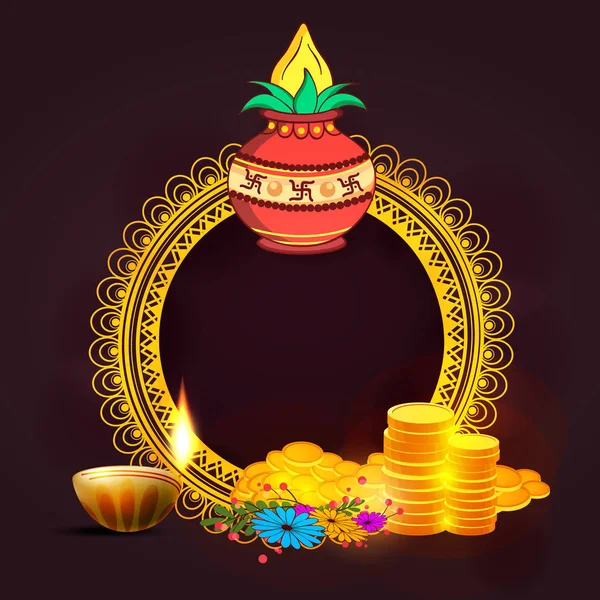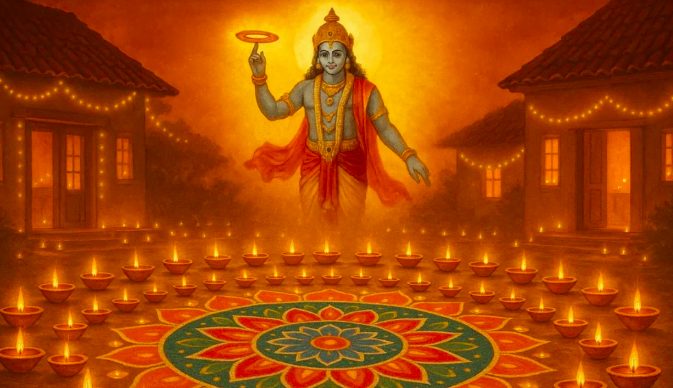
Lord Jagannath’s Grand Journey: The Divine Chariot Festival of Puri
Blog
Every year in Puri, Odisha, millions witness the majestic Rath Yatra of Lord Jagannath, Balabhadra, and Subhadra — a rare occasion when the divine steps out to bless the world. Discover the history, rituals, and spiritual significance of this centuries-old chariot festival that symbolizes devotion, equality, and the journey of the soul.
424
Shivam Gangwar
10 min
Jun 27, 2025
🚩 Jagannath Rath Yatra: The Divine Journey of the Lord of the Universe
Every year, in the sacred city of Puri, Odisha, an awe-inspiring spiritual celebration draws millions from across the globe. The Jagannath Rath Yatra, or the Chariot Festival, is not just a religious procession — it's an experience of divine grace, emotional devotion, and centuries-old traditions that unite people in the celebration of Lord Jagannath, the “Lord of the Universe.”
But what makes this yatra so unique? Why does it attract such massive faith, fervor, and festivities?
Let’s take you on a spiritual journey into the heart of Jagannath Rath Yatra — its history, legends, rituals, and universal message.
🕉️ Who is Lord Jagannath?
Lord Jagannath is a unique and powerful deity worshipped primarily in the eastern state of Odisha. He is considered a form of Lord Vishnu, more specifically, a form of Lord Krishna, who manifests along with his elder brother Balabhadra (Balaram) and sister Subhadra.
Unlike traditional idols, the Jagannath idol is made of wood, and his large round eyes, absence of hands and feet, and abstract form symbolize the eternal and formless nature of God.
“Jagannath” literally means “Lord of the Universe” (Jagat + Nath).
📜 History & Origins of Rath Yatra
The Rath Yatra is believed to have started in the 11th century, soon after the completion of the Jagannath Temple in Puri by King Anantavarman Chodaganga Deva of the Eastern Ganga Dynasty.
However, the concept of a chariot procession can be traced back to ancient Puranic scriptures, especially the Skanda Purana, Brahma Purana, and Padma Purana. The tradition of taking Lord Jagannath out of the temple for public darshan (viewing) represents the philosophy of accessibility of God to all, irrespective of caste, class, or religion.
🛕 Why is Rath Yatra Celebrated?
Jagannath Rath Yatra celebrates the annual visit of Lord Jagannath, Balabhadra, and Subhadra to their aunt’s temple – the Gundicha Temple, about 3 km from the main Jagannath Temple.
This divine journey symbolizes:
-
🧡 The love of Lord Krishna for his devotees
-
🛕 A symbolic retreat from royal life to rural simplicity
-
🌍 The universal accessibility of the divine, as even those not allowed into the temple can see the Lord during the Yatra
🌟 The Legend Behind Rath Yatra
One of the most popular legends says that Krishna, Balaram, and Subhadra visit their maternal aunt’s home once every year for nine days. The Rath Yatra commemorates this tradition.
Another legend connects it to Krishna’s departure from Vrindavan. When Krishna left Vrindavan for Mathura, the gopis (female devotees) were heartbroken. Years later, when they met Krishna’s siblings (Balaram and Subhadra), they were so overjoyed that their emotions froze time. This moment is represented in the temple idols.
🛐 Significance of the Deities & Chariots
Each deity has a dedicated chariot:
-
Nandighosa – for Lord Jagannath (18 wheels, 45 ft high, yellow & red canopy)
-
Taladhwaja – for Lord Balabhadra (16 wheels, green & red canopy)
-
Darpadalana – for Devi Subhadra (14 wheels, black & red canopy)
These massive chariots are newly built every year using neem wood and traditional methods. Pulling the chariot is considered highly auspicious, believed to cleanse one’s sins and bless with spiritual merit.
📅 When is Rath Yatra Celebrated?
Jagannath Rath Yatra is celebrated on the Dwitiya Tithi (second day) of Shukla Paksha in Ashadha month (June-July), according to the Hindu calendar.
The festival spans nine days:
-
Day 1: Rath Yatra – deities ride to Gundicha Temple
-
Day 2–8: Stay at Gundicha Temple
-
Day 9: Bahuda Yatra – return journey to the main temple
🔱 Rituals and Traditions
1. Snana Purnima (Royal Bathing Ceremony)
A few days before Rath Yatra, the deities are bathed with 108 pitchers of water, followed by a period of rest known as Anavasara, during which they "recover" from fever — representing divine humanization.
2. Chhera Pahara (Sweeping the Chariot)
On the main day, the Gajapati King of Puri, dressed as a humble devotee, sweeps the chariots with a golden broom, signifying that before God, all are equal — even kings.
3. Hera Panchami
Celebrated on the 5th day, where Goddess Lakshmi "angrily" visits Gundicha Temple as Lord Jagannath left her behind. A light-hearted enactment follows where she returns after damaging part of the chariot.
4. Bahuda Yatra
The return journey of the deities after 9 days. The yatra ends with Suna Besha, when the deities are dressed in golden attire — a grand visual feast for devotees.
🌍 Global Celebrations
Though Puri is the main epicenter, Rath Yatra is now celebrated in over 100 cities worldwide, especially by the ISKCON (International Society for Krishna Consciousness) community. From London to New York, Moscow to Mumbai, the message of Jagannath spreads love, unity, and devotion across cultures.
🙏 Spiritual Meaning of Rath Yatra
The Rath Yatra is not just about chariots or processions — it symbolizes:
-
Letting God into your life by pulling the chariot
-
The journey of the soul towards divine realization
-
The removal of ego, as we surrender to the Lord’s will
-
Equality, as millions of devotees, regardless of caste or creed, pull the Lord’s chariot
🌸 Why is Lord Jagannath So Unique?
-
His form is incomplete, representing that divinity is beyond form and structure
-
Worshiped with brother and sister, showing a wholesome family bond
-
Offers prasadam 365 days a year, one of the largest food offerings in the world (Mahaprasad)
-
The only deity taken outside the temple for darshan — breaking the rules of restriction
🕯️ Conclusion: The Festival Where the Lord Comes to You
In most traditions, devotees go to temples to see the deity. But in the Rath Yatra, the Lord comes out to bless the world. Jagannath Rath Yatra teaches us humility, unity, and devotion.
It’s a moment when the divine rides in the street, pulled by human hands, and carried in hearts across the world.
So this Ashadha, whether you are in Puri or a city far away — feel the wheels of devotion turn, and let the Lord of the Universe guide your journey of life.
🚩 जगन्नाथ रथ यात्रा: जगत के नाथ की भव्य यात्रा
हर वर्ष ओडिशा के पवित्र शहर पुरी में एक दिव्य यात्रा होती है, जो ना केवल भारत में बल्कि विश्वभर में करोड़ों श्रद्धालुओं के दिलों को छू जाती है — यह है जगन्नाथ रथ यात्रा।
यह कोई साधारण शोभा यात्रा नहीं, बल्कि भगवान जगन्नाथ, उनके भ्राता बलभद्र और बहन सुभद्रा की भक्तों के बीच आमजन दर्शन की एक महान परंपरा है।
लेकिन यह यात्रा इतनी खास क्यों है? इसमें क्या चमत्कार है जो हर साल लाखों श्रद्धालुओं को आकर्षित करता है?
आइए जानें इस दिव्य यात्रा की पूरी कथा — इसके इतिहास, मान्यता, परंपरा और आध्यात्मिक रहस्य।
🕉️ भगवान जगन्नाथ कौन हैं?
भगवान जगन्नाथ को भगवान विष्णु का रूप माना जाता है, विशेषकर भगवान श्रीकृष्ण का। वे अपने भाई बलभद्र (बलराम) और बहन सुभद्रा के साथ पूजे जाते हैं।
उनकी मूर्ति विशेष होती है — लकड़ी से बनी, गोल नेत्र, बिना हाथ-पैर के प्रतीकात्मक स्वरूप। यह उनके निराकार स्वरूप का प्रतीक है — जो सभी रूपों से परे है।
"जगन्नाथ" का अर्थ है — जगत के नाथ, यानी संपूर्ण ब्रह्मांड के स्वामी।
📜 जगन्नाथ रथ यात्रा का इतिहास
यह यात्रा 11वीं शताब्दी से मानी जाती है, जब पुरी के राजा अनंतवर्मन चोडगंग देव ने जगन्नाथ मंदिर का निर्माण कराया। लेकिन रथ यात्रा की परंपरा इससे भी पुरानी है, जो स्कंद पुराण, पद्म पुराण और ब्रह्म पुराण में वर्णित है।
भगवान के इस नगर भ्रमण का उद्देश्य है — हर व्यक्ति को भगवान के दर्शन की सुविधा देना, विशेषकर उन लोगों को जो मंदिर के गर्भगृह में प्रवेश नहीं कर सकते।
🌟 रथ यात्रा क्यों मनाई जाती है?
हर साल आषाढ़ मास की शुक्ल द्वितीया को भगवान जगन्नाथ, बलभद्र और सुभद्रा जी अपनी मौसी के घर, गुंडिचा मंदिर जाते हैं। यह यात्रा लगभग 3 किलोमीटर लंबी होती है और 9 दिनों के बाद वापसी होती है।
यह दर्शाता है:
-
भगवान का भक्तों के प्रति प्रेम
-
राजसी जीवन से विराम और सादगी की ओर वापसी
-
हर वर्ग, जाति और धर्म के लिए भगवान का खुला दरबार
📖 जगन्नाथ रथ यात्रा से जुड़ी कथा
महाभारत काल में एक कथा प्रसिद्ध है कि भगवान श्रीकृष्ण जब मथुरा चले गए थे, तो वृंदावन की गोपियाँ उनके वियोग में व्याकुल थीं। जब श्रीकृष्ण के भाई बलराम और बहन सुभद्रा उनसे मिलने गए, तो उनकी प्रेममग्न स्थिति देखकर सुभद्रा बीच में खड़ी हो गईं — इस प्रेमपूर्ण दृश्य को मूर्ति के रूप में स्थापित किया गया।
🛐 तीनों रथों का विशेष विवरण
-
नंदीघोष – भगवान जगन्नाथ का रथ (18 पहिए, लाल और पीला रंग)
-
तालध्वज – भगवान बलभद्र का रथ (16 पहिए, हरा और लाल रंग)
-
दर्पदलन – माता सुभद्रा का रथ (14 पहिए, काला और लाल रंग)
ये रथ हर साल नये नीम के पेड़ों से बनाए जाते हैं, पारंपरिक तरीकों से। रथ खींचना पुण्य का कार्य माना जाता है।
📅 रथ यात्रा कब होती है?
आषाढ़ शुक्ल द्वितीया (जून–जुलाई) को यह यात्रा होती है। यह यात्रा 9 दिनों तक चलती है:
-
पहला दिन: रथ यात्रा — गुंडिचा मंदिर तक
-
2 से 8वां दिन: भगवान का विश्राम
-
9वां दिन: बहुड़ा यात्रा — मंदिर वापसी
🔱 रथ यात्रा से जुड़ी प्रमुख परंपराएं
1. स्नान पूर्णिमा
108 कलशों से भगवान को स्नान कराया जाता है, जिसके बाद वे 15 दिन तक दर्शन नहीं देते — इसे अनवसर कहते हैं।
2. छेरा पहाड़ा
पुरी के गजपति राजा सोने की झाड़ू से रथ को साफ करते हैं, जो समता का प्रतीक है — भगवान के सामने राजा भी सेवक है।
3. हेरा पंचमी
लक्ष्मी जी रुष्ट होकर भगवान से नाराज होती हैं और प्रतीकात्मक क्रोध दिखाती हैं — यह विवाह संबंधों की हास्यप्रद झलक है।
4. सुनबेसा
वापसी पर भगवान को सोने के आभूषणों से सजाया जाता है, जिसे लाखों लोग देखने आते हैं।
🌍 विश्व में रथ यात्रा का विस्तार
पुरी ही नहीं, भारत और विदेशों में भी रथ यात्रा होती है। ISKCON के माध्यम से यह उत्सव न्यूयॉर्क, लंदन, मास्को सहित कई शहरों में मनाया जाता है।
🌸 जगन्नाथ जी की विशेषताएँ
-
लकड़ी की मूर्ति — बदलती रहती है हर 12 वर्ष में (नवकलेवर)
-
बहन और भाई के साथ पूजा — पारिवारिक एकता का संदेश
-
महाप्रसाद — 56 भोग, पूरे साल दिया जाता है
-
मंदिर से बाहर आकर दर्शन देने वाले इकलौते भगवान
🙏 आध्यात्मिक संदेश
-
भगवान के रथ को खींचना = ईश्वर को अपने जीवन में लाना
-
यात्रा = आत्मा की ईश्वर तक पहुँचने की यात्रा
-
हर वर्ग के लिए समान अवसर = समता और प्रेम
🕯️ निष्कर्ष: जब भगवान स्वयं आपके द्वार आते हैं
अन्य तीर्थों में भक्त भगवान के दर्शन को जाते हैं, लेकिन रथ यात्रा में भगवान स्वयं भक्तों के पास आते हैं। यह सच्चे प्रेम, समर्पण और सनातन परंपरा का उत्सव है।
इस आषाढ़, जब पुरी के रथों की घंटियां बजें — अपने हृदय में भगवान को आमंत्रित करें।
जगन्नाथ केवल एक नाम नहीं — वह विश्व को प्रेम और भक्ति का मार्ग दिखाने वाले नाथ हैं।





